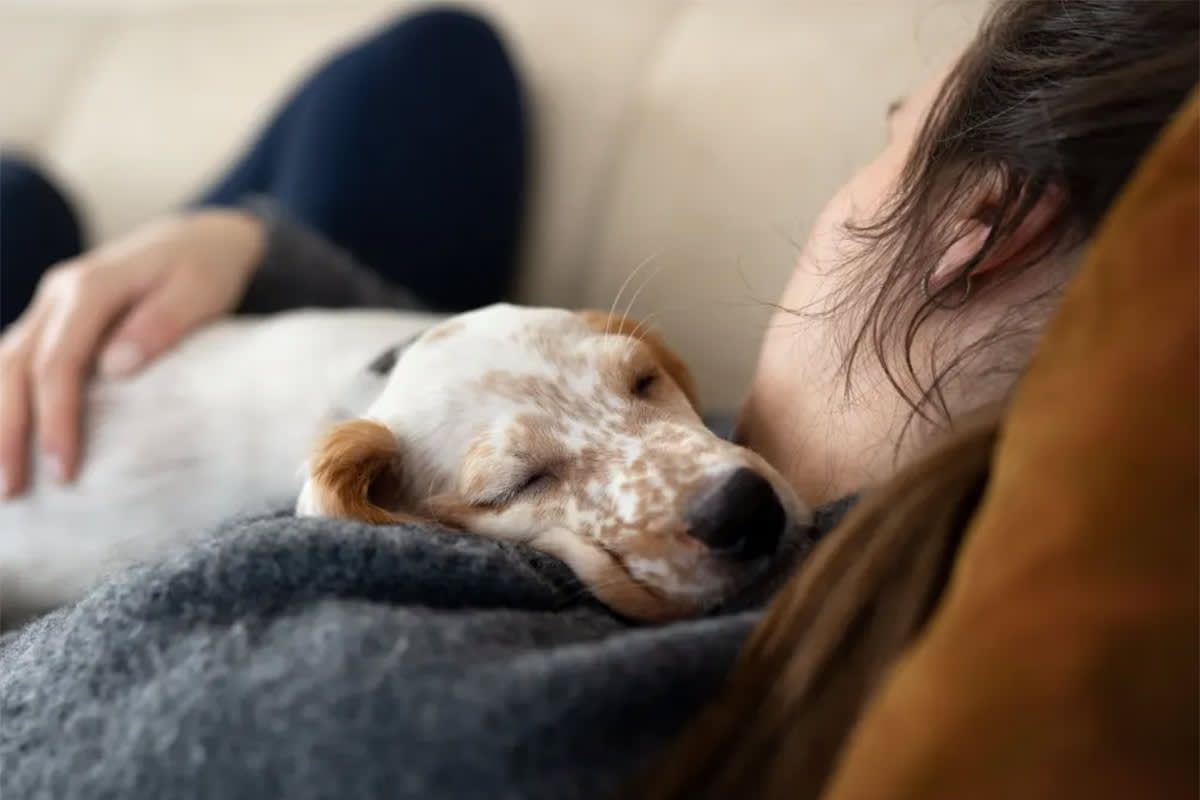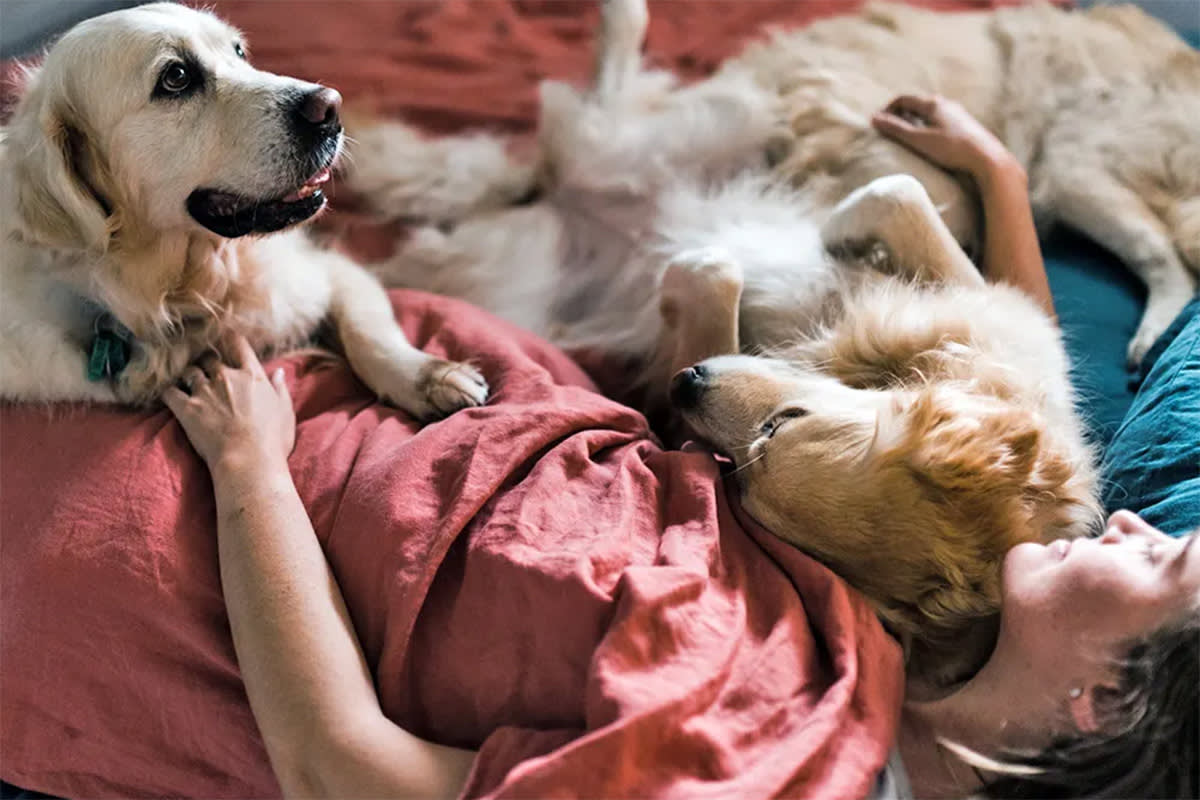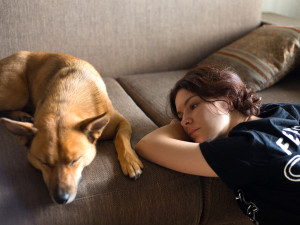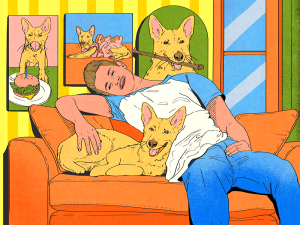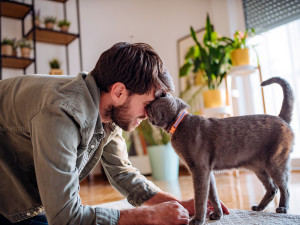Discover Your Dog’s Love Language
Which of these five sounds most like your pup?
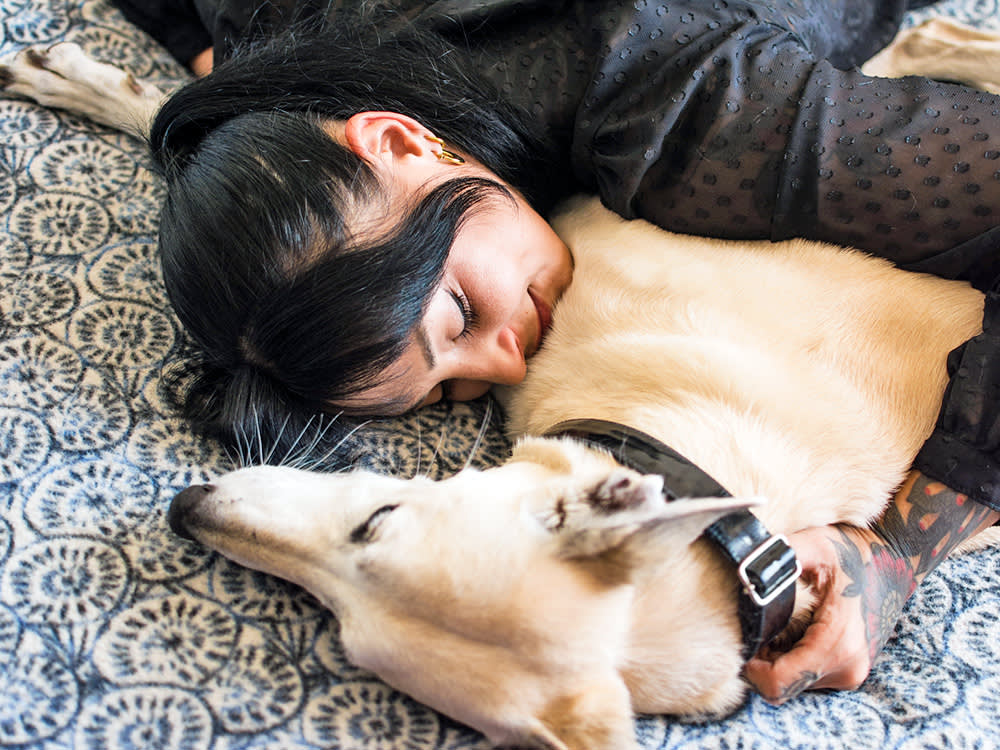
Share Article
The concept of love languages has been part of popular culture since the 1990s, when Gary Chapman’s bookopens in new tab The 5 Love Languages arrived on the scene. Chapman’s theory is that humans like to receive love in one of five specific ways: quality time, physical affection, acts of service, gifts, and affirmations.
While the theory of love languages has been critiqued as being overly simplistic, the idea continues to resonate because it’s an effective shorthand way of understanding we all have different ways of giving love and feeling loved. Do dogs have love languages? Just like us, dogs are individuals with individual preferences for how they want to be loved.
As a certified professional dog trainer, one big challenge I see dog parents facing is not understanding their dogs’ needs. This may take the form of not meeting their dog’s exercise or enrichment needs or doing something their dog isn’t actually a fan of. For example, if you have a couch-potato dog, a long morning walk might not be the best way to show how much you care.
In reality, pups are going to want love shown to them in a variety of ways, but most dogs will have a specific love language — like a code their pet parent needs to crack. Thinking about your dog’s individual love language can help you make sure they are feeling loved and improve the relationship you have with your dog.

Words of affirmation
If you have a dog who hangs on your every word, chances are words of affirmation are their love language. Most dogs love to hear how good they are, but some dogs come alive with excitement when being praised. Dogs whose love language is words of affirmation may even prefer praise to other rewards, like treats.
These dogs want to be told how good they are all the time, so be sure to give your dog lots of verbal praise when teaching them something new, playing together, or when they follow a cue to perform a specific behavior. Praise helps your dog know they have done something you like, and how loved they are. For some dogs, a lot of praise is even almost as motivating as a treat. When praising your dog, pay special attention to your tone of voice. Most dogs respond especially positively when their people use cheerful, upbeat voices.
Physical touch
Dogs who thrive on physical touch will generally seek it out regularly, particularly from people they have close connections to. Dogs who are seeking out physical affection will not only approach but will also generally lean into the person who is petting them, to encourage the love to continue. Many dogs enjoy being pet, but not all do. Because most of us naturally are drawn to wanting to pet dogs, especially our dogs, it’s easy to forget this might be a miss in love language between you and your dog.
While they may tolerate physical affection, especially from their guardians, it isn’t something they love or would seek out. To determine if your dog’s top love languages include physical touch, pay attention to how they respond to being pet. Does your dog approach for physical attention and work to get you to pay attention to them? That’s a good sign that physical touch tops your dog’s list of languages. If your dog shies away or shows other signs of discomfort — like a stiff body, or pinned ears — that’s an indication they aren’t comfortable being pet.
Even if dogs like being touched, they still may not like pets on certain areas of their bodies. T heir tail, ears, paws, and face are sensitive areas that most dogs don’t enjoy being pet. Because many of us love cuddling with our dogs, many dogs will also offer up physical closeness or attention if they can tell we are upset or in need of a little extra love.
Gifts/gift giving
Does your dog always bring you toys to get you to play or want to share their soggy chew with you? If so, gifts and gift-giving might be your dog’s love language. Just like some people feel the most loved when they are receiving or giving gifts, the same can be true for our pups. As part of their play styles, some dogs really enjoy “sharing” or “gifting” their toys and other valuables with family members and visitors. Sharing resources is a top way that many dogs will show they care about people or other animals in their life.
Some dogs also seem to get the most excited when they are given new toys. While spoiling your dog with new toys is fun, it can get expensive. One budget-friendly way to make your dog feel like they are regularly getting something new is to do a regular toy rotation. Split your dog’s toys up into two (or more) sets.
Then, every few days or weeks, rotate which toys your dog has access to, and put the others away in a closet. Every time you rotate toys, your dog will feel like they are being “gifted” new toys, without you having to break your budget to make your dog feel loved.
Acts of service
Is your dog always underfoot, trying to “help” you around the house or yard? Or maybe your dog always seems to know when you’re having a bad day and need some extra cuddles? These dogs might be seeking attention, or they genuinely might be attempting to be helpful. These dogs, who thrive on helping, are the sorts of dogs who may have acts of service as their love language. If you have a dog who is always busy, you might be able to best understand their top love language as acts of service.
Most dogs are beloved companions, but in the not-so-distant past, many dogs were working dogs. Depending on your dog’s breed (or mix of breeds), that strong work ethic may still be a big part of their personality. These pups feel most complete and satisfied when they have a job to do; they are the opposite of couch potatoes. One of the best ways to help these doggos understand how loved they are is to give them jobs to do.
Consider signing them up for classes and getting involved in a dog sport, like agility or scent work. Or teach tricks at home. Training is a fun way to channel your dog’s desire to work. You can also give them little “jobs” to do around the house, such as picking up (pup-safe) items you’ve dropped if you have a dog who is a natural retriever or loves to play fetch.
Quality time
If your dog is your constant shadow, quality time might be their biggest love language. While dogs are individuals, one almost universal love language for them is quality time. Although as dog parents, our lives can get busy, it’s important to always make a point to prioritize quality time with our pups.
Quality time looks like making sure not only their basic needs are met and that they are getting the physical and mental enrichment they need to thrive. Dogs are social creatures, and they want to spend time with their people. For some dogs, this means cuddling on the couch, while other dogs would prefer an extra-long walk. Think about what activities your dog most enjoys doing, and make it a point to incorporate more of that into your daily or weekly routine together.
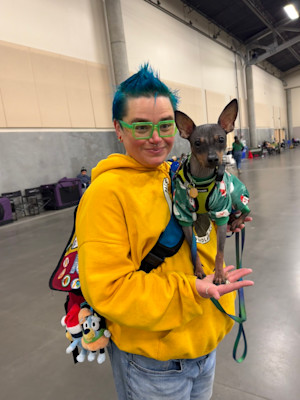
Sassafras Patterdale
Sassafrass Pattrdale is a certified professional dog trainer — knowledge assessed (CPDT-KA) and an award-winning author and freelance writer. Sassafras’s work has been honored by organizations ranging from the American Library Association, and the Lambda Literary Foundation, to the Dog Writers Association of America and the Cat Writers Association. Sassafras is the author of 12 fiction and nonfiction books. The film rights to Sassafras’s Lambda Literary Finalists novel, Lost Boi, were recently acquired. Their training books are Tricks In The City and Chew This Journal.
Related articles
Does My Dog Love Me? How to Interpret Canine Bonding Behavior
What to do when you don’t feel the close bond you want.
![illustration of a man cuddling a dog on a couch]()
What Does Your Love Language Say About You as a Pet Parent?
We all give and receive love in our own way, pets included.
![Man cuddling his gray cat.]()
Does Your Cat Think You’re Their Mom?
You love them like a child, but is the feeling mutual?
![A woman smiling and hugging her cat on a bed.]()
Being a Neurotic Pet Parent is a Good Thing, Study Says
“Cat ladies aren’t crazy, they’re just anxious...and that anxiousness is associated with trust and affection for a cat.”
![Woman petting her brown and white cat on the couch.]()
Does Your Attachment Style Affect How You Are as a Pet Parent?
You know you’ve wondered this...
